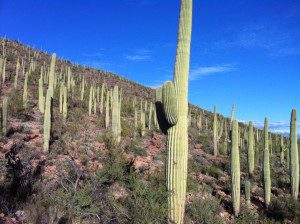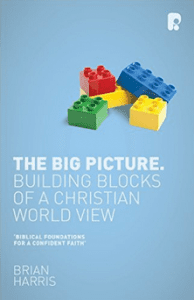 There are several new books on my desk, The Nature of Creation: Examining the Bible and Science by Mark Harris, The Lost World of Adam and Eve: Genesis 2-3 and the Human Origins Debate by John Walton and Religion and the Sciences of Origins by Kelly James Clark. Each book digs into different aspects of the discussions surrounding science and Christian faith. Over the next several weeks (probably months) I intend to dig into all of them.
There are several new books on my desk, The Nature of Creation: Examining the Bible and Science by Mark Harris, The Lost World of Adam and Eve: Genesis 2-3 and the Human Origins Debate by John Walton and Religion and the Sciences of Origins by Kelly James Clark. Each book digs into different aspects of the discussions surrounding science and Christian faith. Over the next several weeks (probably months) I intend to dig into all of them.
Today I will begin with The Nature of Creation. The author, Mark Harris, is a lecturer in Science and Religion at the University of Edinburgh. He began his career as an experimental physicist in condensed matter where he investigated the properties of the so-called spin-ice, solids with an intrinsic spin disorder that persists even to absolute zero. Pure water falls into this class, but is hard to crystallize. Dr. Harris worked on heavy rare earth titanate pyrochlores X2Ti2O7 with X= Gd, Dy, Ho, Er, or Yb. He has a number of influential papers published in Physical Review Letters and other top-notch scientific journals. I bring this up only to emphasize that he has the credentials and background from the sciences. On the religion side, he also trained for the ordained ministry and spent time in university chaplaincy and cathedral ministry before taking his current position at the University of Edinburgh running the Science and Religion program in the School of Divinity.
In the first chapter of The Nature of Creation, Harris outlines some general ideas. It is common to think about the doctrine of creation in terms of a series of propositions. (p. 4)
- God created the world from nothing. He is not dependent upon the world.
- Creation is wholly contingent upon God.
- God is therefore both the initial creator of the world, and also its continuing sustainer.
- God created the world as good.
- Evil came to be present, but does not derive from God.
- Creation will have an end in a “new heaven and a new earth.”
I’d say that we also affirm that God created the world beautiful. The pictures included in this post display some small part of that beauty.
But is this propositional approach an appropriate way to frame the doctrine of creation?
 We need to take scripture seriously right from the start, but taking scripture seriously as foundational and authoritative also requires acknowledging what the text does and does not say. The biblical texts do not provide one simple view of relationship between creation and Creator. Rather the texts provide many different perspectives.
We need to take scripture seriously right from the start, but taking scripture seriously as foundational and authoritative also requires acknowledging what the text does and does not say. The biblical texts do not provide one simple view of relationship between creation and Creator. Rather the texts provide many different perspectives.
The first few chapters of the Bible (Genesis 1-3) are justifiably memorable, telling the story of the creation of the world in resonant prose, from the beginning of time (“In the beginning”) to the story of the first humans and their shortcomings. When we speak of creation and the Bible it is invariably these chapters which come to mind. However, there is a great wealth of additional creation material spread throughout the Bible, much of which does not show awareness of this initial section. For instance, some of the psalms and prophets speak about creation in terms of a mythological battle between God and the sea, while the book of Proverbs speaks of creation through the personified divine figure of Wisdom. Therefore, one of the first points that should be made in approaching the Bible’s creation texts is that there is no single theological understanding, but a diversity, and it is not clear that this diversity can (or should) be collapsed into a single, harmonized unity. In any case, it is not even as if Genesis 1-3 presents a uniform picture. … Genesis 1-3 contains at least two distinct creation traditions, probably arising from different points in Israel’s history and representing different theological presuppositions. In short the Bible holds several understanding of creation in tension. (p. 9-10)
The creation material contained in the Bible is theological, but it cannot be easily reduced to a series of metaphysical propositions such as those given above. Rather the view of creation is presented in a “diverse variety of narrative and poetic themes.” However, “this diverse body of material … is central to everything the Bible has to say about who God is.” (p. 10) The Bible opens with creation and closes with new creation.
In terms of the Christian Bible’s canonical shape, then creation is the first and last theological statement to be made, and it is theologically foundational; it opens and closes all other statements about God which can be made. It is upon this foundational image of God as Creator that the Bible’s theologies of redemption, ethics, and eschatology are built. Therefore as we look at the creation material in this book, and at the ways in which it has been construed scientifically, we shall see again and again that it is best interpreted in terms of what we learn about God rather than in terms of what we learn about the world. (p. 10)
 A Christian understanding of creation has become contentious as some insist on a literal reading of Genesis 1-3 and a rejection of the conclusions of modern science. Those who take this approach will argue that the text provides a concrete description. It is not “simply” poetic and metaphorical. Harris agrees with this reasoning, although he does not agree with the literal reading of Genesis 1-3. To take the text as metaphorical is to “overlook important points about what the author was trying to achieve.” (p. 11)
A Christian understanding of creation has become contentious as some insist on a literal reading of Genesis 1-3 and a rejection of the conclusions of modern science. Those who take this approach will argue that the text provides a concrete description. It is not “simply” poetic and metaphorical. Harris agrees with this reasoning, although he does not agree with the literal reading of Genesis 1-3. To take the text as metaphorical is to “overlook important points about what the author was trying to achieve.” (p. 11)
For instance, Genesis 1 appears to describe something like a developmental picture of beginnings, which has been compared with modern evolutionary ideas, yet the text is concerned with illustrating how creation is ordered by God in moral and aesthetic terms. … And if we look at the creation imagery more widely in the Bible, we find that it points repeatedly to moral, aesthetic and spiritual values over anything we might construe as “scientific.” We find that it demonstrates God’s fruitfulness, constancy, and faithfulness to the world. (p. 11-12)
 Denis Lamoureux introduced the idea that ancient “science” is present in the Bible, but it is incidental to the message of the Bible – a topic I’ve posted on in the past. (The image to the right comes from his book Evolutionary Creation.) The ancient author used his understanding of cosmology to relate a concrete message about God. We shouldn’t interpret the text metaphorically or as a scientific treatise, rather we should look for the theological message. Harris agrees, pointing out that the Bible does relate a concrete message about creation, but this message is not scientific. It is moral, aesthetic, spiritual, and theological. The creation texts in the Bible use diverse ideas and imagery to describe creation. There is less diversity when it comes to the moral, aesthetic, spiritual and theological message.
Denis Lamoureux introduced the idea that ancient “science” is present in the Bible, but it is incidental to the message of the Bible – a topic I’ve posted on in the past. (The image to the right comes from his book Evolutionary Creation.) The ancient author used his understanding of cosmology to relate a concrete message about God. We shouldn’t interpret the text metaphorically or as a scientific treatise, rather we should look for the theological message. Harris agrees, pointing out that the Bible does relate a concrete message about creation, but this message is not scientific. It is moral, aesthetic, spiritual, and theological. The creation texts in the Bible use diverse ideas and imagery to describe creation. There is less diversity when it comes to the moral, aesthetic, spiritual and theological message.
So far I’ve only scratched the surface, but it looks like Harris will take us in some interesting directions as he explores creation according to science, creation according to the Bible, suffering, evil, and new creation. Join us as we dig in to the book.
Is a Christian doctrine of creation appropriately framed as a series of propositions?
How else could we frame the question?
To what extent should we interpret the biblical texts as about God rather than about the world?
If you wish to contact me, you may do so at rjs4mail[at]att.net.
If interested you can subscribe to a full text feed of my posts at Musings on Science and Theology.















